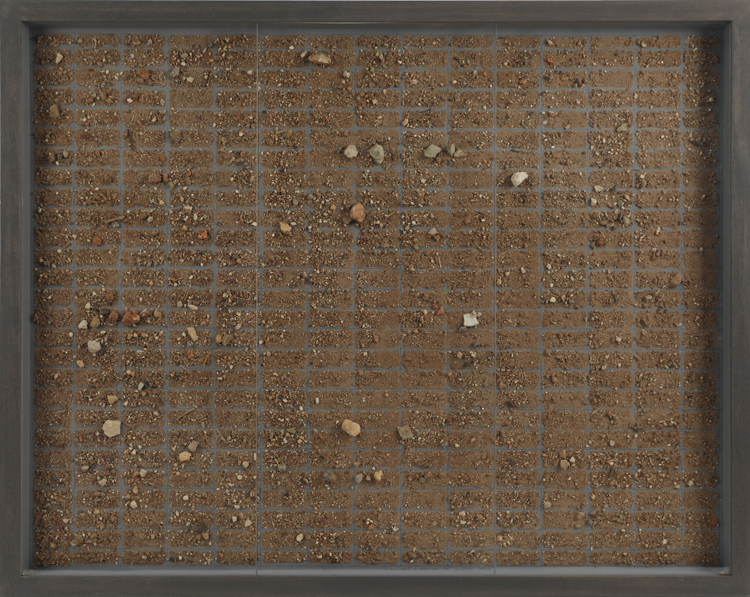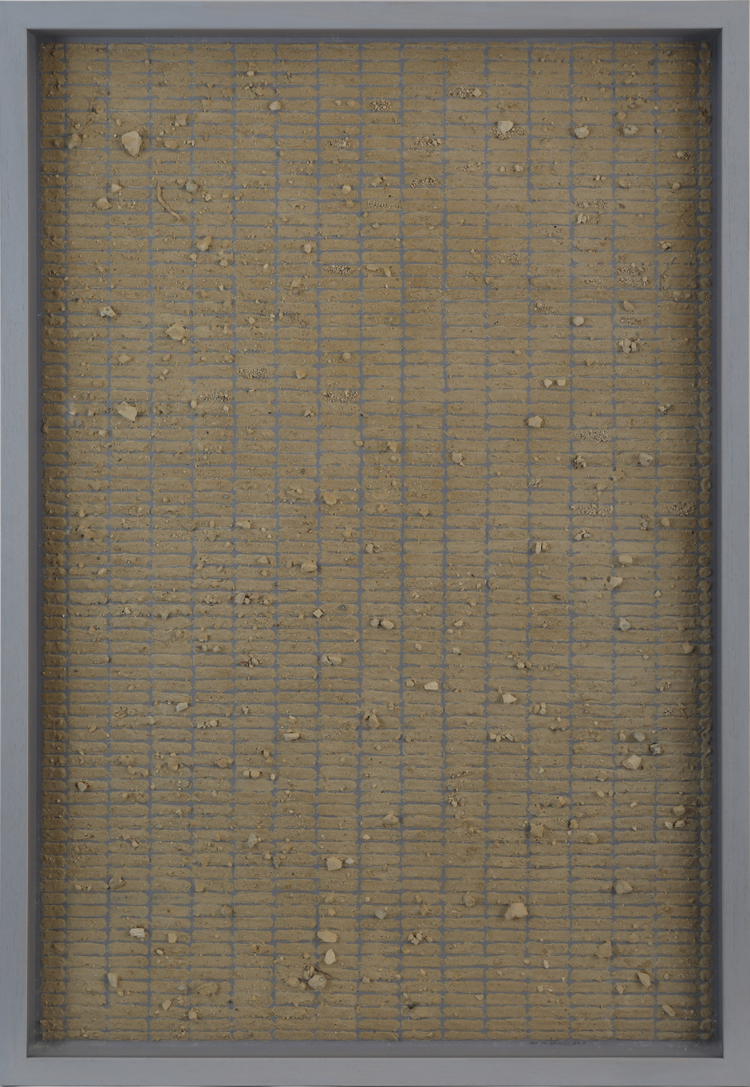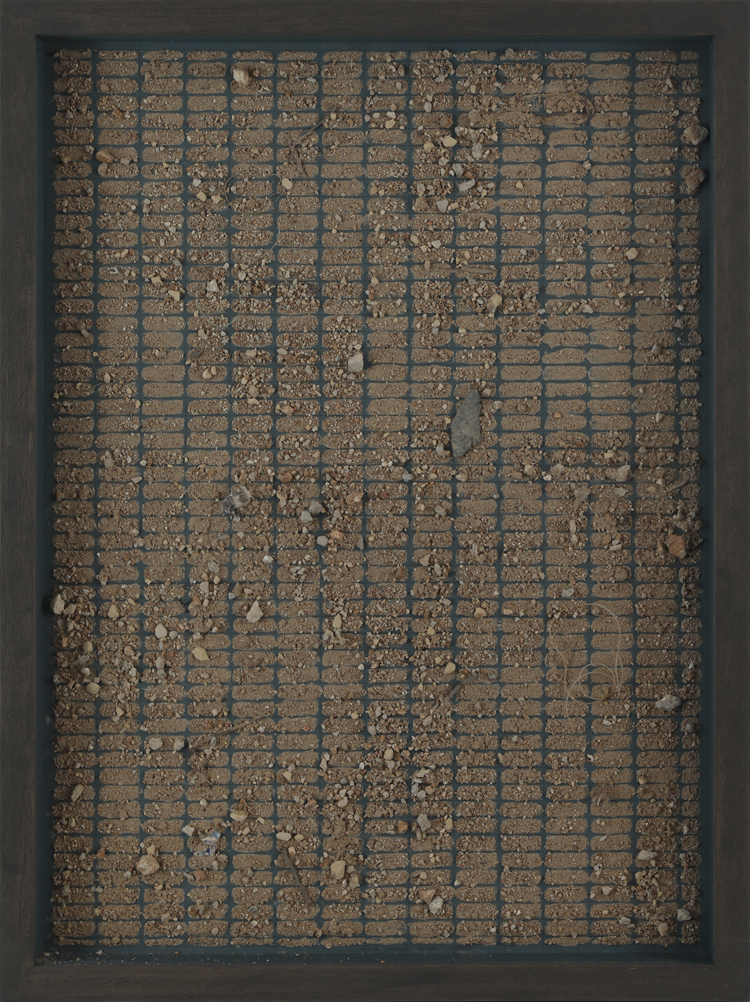
In Between Obliterations: Maxine Attard
In the following discussion, Gozitan-born artist Maxine Attard and Umberto Buttigieg (one of the founding members of the Gabriel Caruana Foundation) share a few more insights on Maxine’s second solo-exhibition: IN BETWEEN OBLITERATIONS – held at the Mill: Art, Culture and Crafts Centre, Birkirkara, from 29.12.2017 until 28.01.2018.
Eve Cocks: Maxine, in the exhibition introductory note you’ve mentioned that the works on exhibit (six in all) are made from debris which you have collected from different building sites…
Maxine Attard: Each work represents a particular building site which I’ve come across recently. In fact, if you read through the titles of the works (images below), you will notice that each work bears the name of the street and the site from where I’ve collected the debris. The sites are within walking distance from where I live in Nadur (Gozo); they are all places that have shaped my identity.
Eve Cocks: Why did you name the exhibition “In Between Obliterations”?
Maxine Attard: Because most of the debris that I’ve collected (and represented in the work) belongs to a group of old buildings which have either been obliterated or are in the process of being demolished (and cemented over) to make way for new construction.

5-20 Triq G.Vella, Nadur
Debris collected from building site 5-20 Triq G.Vella, Nadur – mounting board, wood frame
2017
Photo Credit: Martin Attard
Eve Cocks: …and what triggered your interest in making works out of building-site debris?
Maxine Attard: My frustration towards the reckless demolishing that is currently taking place across Malta.
Eve Cocks: So we can read your works as a form of critique-social commentary on the ongoing demolition of local traditional buildings ?
Maxine Attard: The work is intended to raise awareness (to show things as they are) rather than to criticise. I mean… I am in a way criticising the situation, but at the same I am not, as that’s the pace of life. So it all boils down to how you want to see it. Besides, I would like to highlight that the exhibition focuses/ invites the viewer to reflect upon other aspects or notions, such as those of memory, identity and the concept of touch.
Eve Cocks: Could you kindly explain how the concept of touch is being reflected in your work?
Maxine Attard: In my work there is this element (idea) that the debris, the debris that I’ve collected and presented, contains some particles or fragments within it which have been touched by the people who used to live in the now or soon-to-be demolished Nadur buildings. My interest in the concept of touch was inspired from Edmund de Waal’s Japanese Netsuke collection (miniature sculptures). Similar to de Waal’s miniature sculptures, the debris holds within it “an extraordinary amount of people’s touch”; it has witnessed the lives/stories of countless people who had lived in those houses. De Waal, an English writer and potter, beautifully explains this concept in his book: The Hare with Amber Eyes.

Triq ta’ Grunju, Qala
Debris collected from building site Triq ta’ Grunju, Qala – mounting board, wood frame, glass
2017
Photo Credit: Martin Attard
Eve Cocks: And what about you Umberto, what’s your response to Maxine’s work?
Umberto Buttigieg: For me the works are like depositories of memories. I also find the works very spiritual in the sense that, similar to Holy Relics, the works are made from tiny particles (which have been collected, preserved and enclosed within a glass and wooden box) for people to view and connect with.
Furthermore, I find an archaeological aspect in the work. The grid format which Maxine adopted to organize the debris brings to mind archaeological samplings. In archaeology, every little particle counts as much as the other, not just the big mosaics or the whole pots – as even a tiny piece of clay can determine the story of a place. So for me, the sampling of debris also says something about the remains of those houses and the people who lived in them.
Maxine Attard: Most of the people that used to live in those old houses have either passed away or moved on with their lives. Therefore, the debris can be seen as a witness to these people’s lives. The works could be read as an attempt to preserve, or save, some of those memories before they are completely obliterated by the new construction. Preserving what came before us (and this even includes our domestic buildings) will not only help us visualize or keep the memories alive, but it will also aid our understanding of who we are and from where we are coming from.
Umberto Buttigieg: The question of identity, of WHO ARE WE? is very much present in the exhibition. It does put into question what us Maltese living in the 21st century are going to leave behind. Perhaps, this push (fascination) towards annihilating and building the new says something more about us the Maltese, than our capital city does.

Triq Daħlet Qorrot, Nadur
Debris collected from building site Triq Daħlet Qorrot, Nadur – mounting board, wood frame, glass
2017
Photo Credit: Martin Attard
IN BETWEEN OBLITERATIONS was supported by GABRIEL CARUANA FOUNDATION and GOZO ARTS.
PHOTO CREDITS: MARTIN ATTARD
FEATURED IMAGE DETAILS:
7-20 Triq il-Madonna ta’ Lourdes, Nadur
Debris collected from building site 7-20 Triq il-Madonna ta’ Lourdes, Nadur – mounting board, wood frame,
2017
